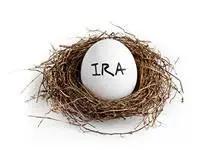Question: I have an IRA, and someone told me that once I reach a certain age that I have to take distributions from that IRA. Can you explain this to me?
Answer: In general, you will have to take required minimum distributions from your IRA when you turn 72 (thanks to the SECURE Act). The minimum withdrawal is, what the IRS calls, your “required minimum distribution” or “RMD.” In general, IRA accounts are funded with pre-tax dollars. (Roth IRA’s are the exception as the tax is paid first) The government allows you to save for your retirement and defers the tax until you start to take distributions. In this way, you are encouraged to save for your own retirement by deferring the income tax and allowing the account to grown tax deferred.
The distribution rules for RMD’s are contained in IRS Publication 590. However, the publication is quite long and difficult to read. Publication 590 contains two tables. The first table is contained in Appendix B, Table III. It has very lenient withdrawal mandates. For example, a 76 year-old has to withdraw only 1/22nd of the balance. For example, say the balance of your IRA on Dec. 31, 2020 was $200,000, and your age on Dec. 31, 2021 will be 76. The calculation of the minimum withdrawal for 2021 is $200,000 divided by the factor for someone who is 76 (which is 22) for a RMD of $9,090. The first RMD must be taken in the calendar year in which the taxpayer turns 72.
The other table is contained in Appendix B, Table I. This table applies to an IRA that is inherited from someone other than a spouse. These divisors are smaller, so the RMD is larger. If you inherit an IRA, you must start taking distributions the year after the original owner dies, regardless of your age. When a spouse inherits an IRA, the spouse can defer taking distributions on their rollover IRA until they turn 72. The SECURE Act eliminated the “lifetime stretch” of inherited IRAs, meaning that if you do not meet one of the limited “eligible designated beneficiary” (EDB) exceptions, you must withdraw all assets from the inherited account within 10 years. The only exceptions are:
- Spouse of original owner
- Minor child (not grandchild) of original owner
- Less than 10 years younger than original owner
- Disabled/chronically ill (as defined under the applicable sections of the Internal Revenue Code)
An IRA containing after-tax money, known as a Roth IRA, has no withdrawal mandate for the owner or the owner’s surviving spouse. A Roth IRA inherited from someone other than a spouse follows the same withdrawal schedule for inherited IRAs. However, since no income is owed when ROTH distributions are made, most younger beneficiaries of ROTH IRAs will want to allow the account to grow tax free as long as possible before taking distributions.
Calculating the RMD for an IRA that has been inherited more than once, is more complicated. Assuming the first beneficiary was not a spouse, the second beneficiary of that IRA has to follow the payout schedule of the first beneficiary. For Example: Your grandmother leaves her IRA to your father, who dies at age 80, leaving it to you when you are 55. The year after he dies you have to take the RMD as an 81-year-old and the next year the RMD for an 82-year-old. To calculate the RMD for each year you would use the table contained in Appendix B, Table II. The IRA institutions are required to calculate your distributions. Since you may have different IRA’s with different distributions rules, it is best to review this with your tax professional. The IRS collects a 50% penalty for any required distribution that is not taken.





